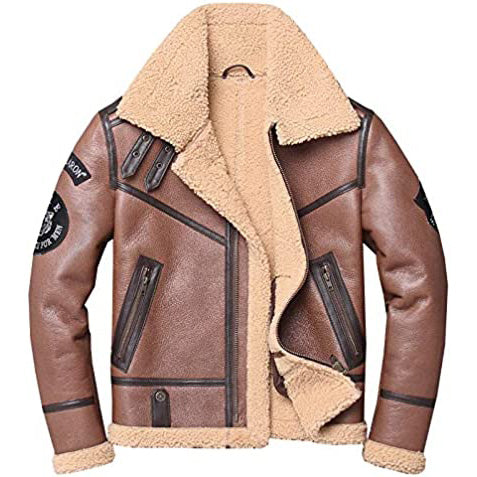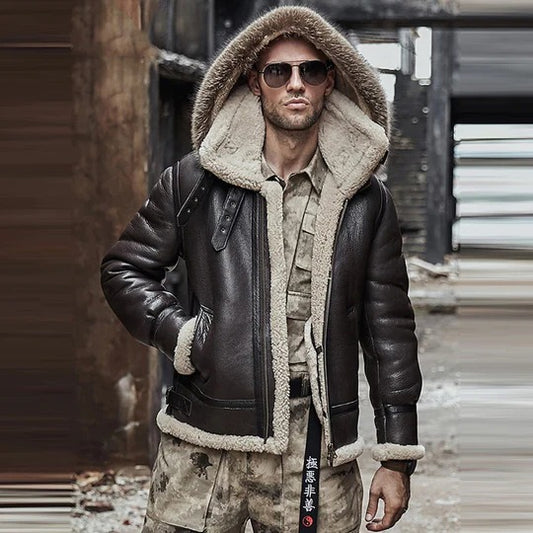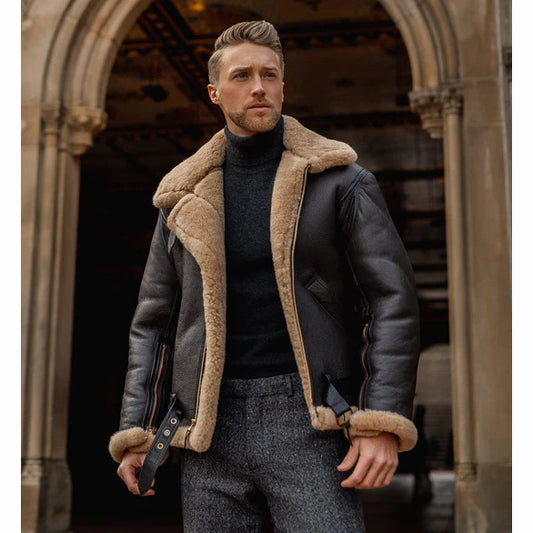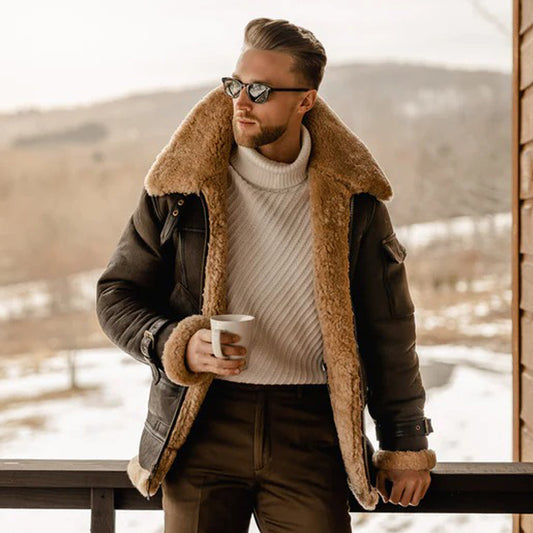What is Leather? A Comprehensive Guide
Leather has been a staple material in human culture for centuries. Its versatility, durability, and timeless appeal make it a preferred choice for fashion, accessories, and many other industries. But what exactly is leather, and what makes it so special? This comprehensive guide will answer all your questions about leather, from its origins to its many types and uses.
The Origins of Leather: A Brief History
Leather production dates back to ancient civilizations. From the Egyptians to the Romans, various cultures have utilized leather for clothing, shelter, and tools. The process of tanning turning raw animal hides into durable leather was developed thousands of years ago and has since evolved into a sophisticated craft.
The enduring appeal of leather is not only due to its practical uses but also its association with luxury and craftsmanship. Today, leather is synonymous with high-quality fashion and accessories, and brands like Jackets Kingdom continue to showcase leather's timeless appeal.
How is Leather Made? The Tanning Process Explained
Leather is made from animal hides, primarily from cows, although other animals like goats, sheep, and pigs are also used. The process of turning these raw hides into leather is called tanning. Here’s a breakdown of the tanning process:
1. Preparation
- The hide is cleaned to remove hair, fat, and flesh. This is the initial stage where the raw hide is prepped for tanning.
2. Tanning
- In this step, the hide is treated with tanning agents either natural (from plant tannins) or synthetic chemicals. This process preserves the hide, preventing it from decaying and making it more durable.
3. Drying and Finishing
- After tanning, the leather is dried, dyed, and finished with oils or waxes to improve its texture, appearance, and water resistance.
4. Conditioning
- Finally, the leather is conditioned to keep it supple and ready for use in manufacturing garments, accessories, or furniture.
Each step is essential to creating high-quality leather products, ensuring that the material is both durable and luxurious.
Types of Leather: From Full-Grain to Suede
Not all leather is created equal. There are various types of leather, each with its characteristics, pros, and cons. Let’s break down the most common types:
Full-Grain Leather
- This is the highest quality of leather, made from the top layer of the hide. It retains its natural grain and is the most durable, making it perfect for items like leather jackets and boots. Full-grain leather ages beautifully, developing a rich patina over time.
Top-Grain Leather
- Slightly lower in quality than full-grain, top-grain leather is sanded and buffed to remove imperfections. It’s still durable and is commonly used in luxury leather goods, but it doesn't have the same aging qualities as full-grain leather.
Corrected-Grain Leather
- This leather has been sanded to remove flaws and embossed with an artificial grain. It's often used for lower-end leather products due to its affordability.
Suede
- Made from the underside of the hide, suede has a soft, fuzzy texture. While it's not as durable as full-grain leather, suede is loved for its delicate and luxurious feel.
Patent Leather
- A glossy, smooth leather finish created by applying a plastic coating. Patent leather is often used in shoes and accessories due to its sleek appearance.
Bonded Leather
- This is the lowest quality leather, made from leftover scraps of hide that are bonded together with adhesives. It’s typically used in cheaper products and doesn’t have the longevity of higher-quality leathers.
Why Leather is a Timeless Fashion Staple
Leather’s appeal in fashion is undeniable. From classic leather jackets to trendy leather handbags, its versatility and durability make it a top choice for designers and consumers alike. Here’s why leather remains a top pick in fashion:
Durability and Longevity
- High-quality leather can last for decades if properly cared for. Unlike synthetic materials, it doesn’t easily tear or wear out, making it a worthwhile investment.
Timeless Style
- Leather never goes out of style. Whether you’re wearing a leather biker jacket or carrying a sleek leather handbag, the material always adds a touch of sophistication and edge.
Versatility
- Leather can be dressed up or down, making it suitable for both formal and casual occasions. Its versatility means it can be incorporated into various aspects of fashion, from jackets to shoes to accessories.
Sustainability
- When sourced responsibly, leather can be an eco-friendly option. Many manufacturers now focus on sustainable tanning processes and ethical sourcing of hides.
How to Care for Your Leather Products
Leather is a durable material, but it requires care to maintain its appearance and longevity. Here are some expert tips to keep your leather items in top condition:
1. Regular Cleaning
- Wipe down your leather products with a soft cloth to remove dirt and dust. For deeper cleaning, use a leather cleaner specifically designed for the type of leather you own.
2. Conditioning
- Leather can dry out over time, especially in harsh climates. Apply a leather conditioner every few months to keep the material supple and prevent cracking.
3. Proper Storage
- Store leather items in a cool, dry place. Avoid direct sunlight, which can cause the leather to fade or become brittle. Hanging jackets on padded hangers can help maintain their shape.
4. Waterproofing
- Use a water-resistant spray on leather items, especially if they’re exposed to rain or snow. This will help protect the material and keep it looking new.
The Role of Leather in the Fashion Industry
Leather is a mainstay in the fashion world. Many iconic fashion pieces, like the leather jacket, owe their status to the material's versatility and timelessness. Fashion houses like Gucci, Prada, and even smaller brands like Jackets Kingdom continue to innovate with leather, creating new designs that appeal to modern consumers.
In recent years, there’s been a push for more ethical leather production methods, focusing on sustainability. Consumers are becoming more conscious of the environmental impact of their purchases, and the fashion industry is responding by promoting eco-friendly leather options.
Expert Opinion: Why Leather Will Always Be In Style
According to fashion experts, leather will always be a key player in the world of fashion. Designer Sarah Martinez from Jackets Kingdom notes, "Leather has a unique ability to blend luxury with practicality. Its natural beauty, durability, and ability to age gracefully ensure that it remains a favorite material for both designers and consumers."
Experts also highlight leather's adaptability to different fashion trends. Whether it's a vintage-inspired leather jacket or a modern minimalist leather tote, the material continues to reinvent itself, keeping up with changing styles while maintaining its core appeal.
Leather Alternatives: What Are They, and Are They Worth It?
While leather is a beloved material, there are many alternatives available for consumers who prefer not to use animal products. Here are some common leather alternatives and their pros and cons:
Vegan Leather
- Made from synthetic materials like polyurethane, vegan leather mimics the appearance of leather without using animal hides. It's a popular choice for ethical consumers but lacks the durability and aging properties of real leather.
Mushroom Leather
- A newer alternative, mushroom leather is made from the root structure of mushrooms, called mycelium. It's biodegradable and offers a sustainable option, though it's not yet as widely available.
Cork Leather
- Derived from the bark of cork trees, this alternative is eco-friendly and lightweight. It’s commonly used in accessories like wallets and bags but doesn't have the same strength as traditional leather.
Frequently Asked Questions (FAQs)
Q1: What is leather made of?
Leather is made from animal hides, primarily cows, though other animals like goats and sheep are also used.
Q2: What is the difference between full-grain and top-grain leather?
Full-grain leather retains the natural grain and is the highest quality, while top-grain leather is sanded to remove imperfections but is still durable.
Q3: Is leather eco-friendly?
Leather can be eco-friendly if sourced and tanned responsibly, though it depends on the production methods used.
Q4: How do I care for leather products?
Regular cleaning, conditioning, and proper storage are key to maintaining leather. Waterproofing sprays can also help protect the material.
Q5: What is vegan leather?
Vegan leather is a synthetic alternative to animal leather, often made from materials like polyurethane.
Conclusion
Leather remains a highly valued material in both fashion and everyday products due to its durability, versatility, and timeless appeal. While alternatives exist, genuine leather offers unmatched quality and longevity. Whether you're purchasing a leather jacket or a pair of shoes, investing in leather means investing in a product that will last for years to come.
At Jackets Kingdom, we pride ourselves on offering premium leather products that combine style, comfort, and durability. Explore our collection today and find the perfect leather piece to add to your wardrobe.




